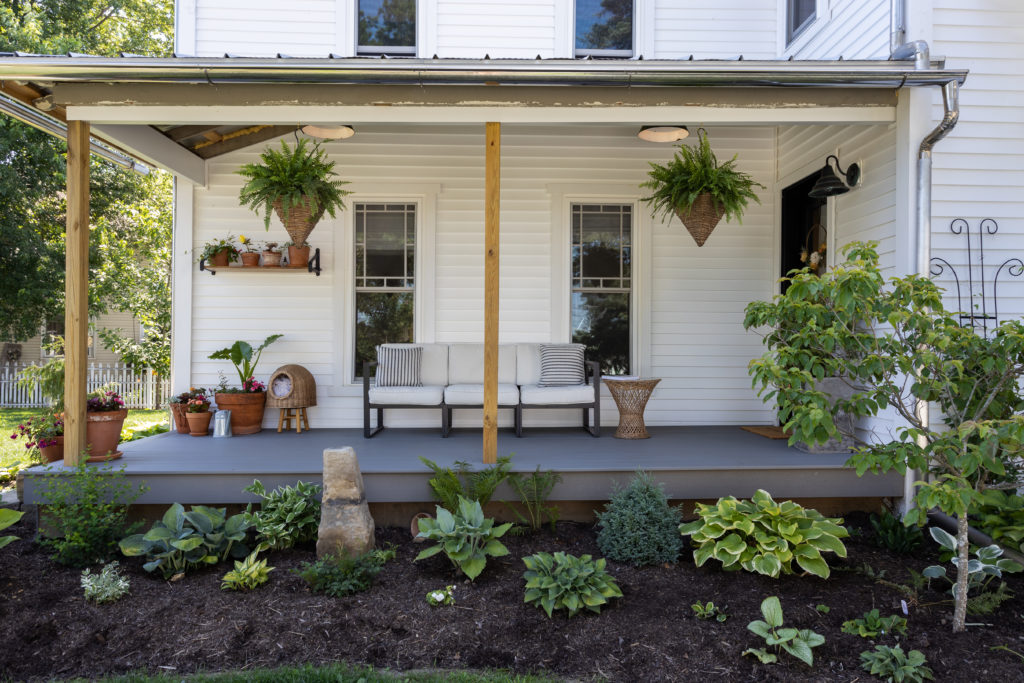Welcome back! After the long, cold winter (especially here in Ohio) it seems like the dreary, wet, and cold days may never end. Can anyone else relate? The good news is, Spring is finally here and we are excited! With Springtime comes garden planning, flowers, and everything beautiful and after the cold winters, that is always something to look forward to.
For this blog, I wanted to help you prepare a garden plan and get all those flower beds prepped and looking beautiful to help accentuate your home. I reached out to my good friend Carrie who is so talented when it comes to anything gardening and anything to do with plants. We asked her to share her favorite tips and tricks to help the rest of us this season.
I hope you enjoy it!
-Sadie

Garden Planning
“Now say to yourself five times, and believe it. This is March. The main thing to do in March is to don’t. I don’t dare do much in my garden…because I know this old fellow March; he fools me every time.” Alfred Carl Hottes, garden editor for Better Homes & Gardens, 1933
I smile every time I read that quote. There’s a reason it’s in my Gardening Binder, a reminder to be patient. Spring is typically the most hopeful time of year for me as a gardener. It’s when I get to begin new routines and put into practice the lessons I’ve learned from the previous year. The garden plans dreamed up in those dark, cold weeks in January begin to take shape.
While Spring marks a new beginning, I have found vegetable gardening to be a year-round process. I often think of the garden beginning in the Fall with how I tuck the garden in for a cold Winter. I hardly ever live up to my own standards of neatly finishing out the gardening season. It’s messy and cold, and honestly, I’m usually tired of all the outside work. When Spring finally arrives, I’m reminded how valuable it is to intentionally ready the garden in the Fall.
Last Fall, I experimented with different organic matter covering the soil. The three I’m comparing are chopped leaves, straw, and untreated bark. I’m curious to see how they will compare in plant quality and yield. It will inform my decision to put the garden to bed for the winter in 2022.
One of my favorite ways of gardening is a no-dig method. The reason I began this method is that I struggled to keep weeds at bay. Looking for a solution one winter, I read The Vegetable Gardener’s Bible by Edward C. Smith. I read it through twice and took notes. That first year was the biggest learning curve I’ve ever experienced in gardening. I still have to remind myself to trust the process.
My favorite reason for gardening this way is to see how happy the soil is. I don’t understand much about soil biology but have enjoyed learning more about the organisms living underground. Undisturbed soil helps develop mycorrhizal fungi, an underground network that is beneficial in increasing the nutrient and moisture-absorbing surface area for roots. The worms and insects do a wonderful job of aerating the soil.
Other gardeners are always teaching and inspiring me. One of my favorite gardeners is Charles Dowding, who does an exceptional job of comparing dig vs. no-dig gardening. Monty Don also lands at the top of the list, providing lots of books and exploring gardening across many regions.
Gardening is one of the most versatile hobbies to have. It can be a love of indoor plants, a small container garden, or large gardens. There’s a garden type for everyone, the secret is to keep trying until you find your niche.

I hope you enjoyed the tips and tricks that were shared and that you are inspired to try some new things this coming season!
Don’t forget to sign up for our email blasts to be the first to see our new project reveals!
-=====
